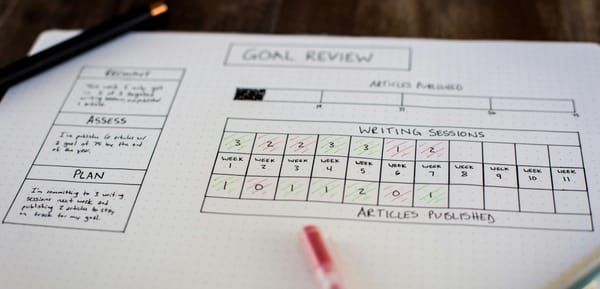Avoidant Attachment Style

What is avoidant attachment styles?
Have you ever heard about attachment styles? There are several types, and learning about them can help you understand relationships better.
Okay, today our topic is avoidant attachment styles. If you notice that your partner seems distant, avoids sharing their emotions, or pulls away whenever the relationship starts to feel more intimate, it may be a sign that they are struggling with intimacy.
This behavior is often not a sign of a lack of love or interest but rather the result of an attachment pattern known as the avoidant attachment style.
According to attachment theory (Bowlby, 1969), the way we connect with our caregivers in childhood shapes how we build relationships as adults. Some children who lacked emotional support or grew up with emotionally distant caregivers may become an adult who fears intimacy, overvalues independence, and struggles with vulnerability.This article explains what the avoidant attachment style means, how to identify it in your partner, and provides strategies for coping and communicating more effectively.
What Is Avoidant Attachment Style?
People with an avoidant attachment style often feel uncomfortable with emotional closeness, keep their distance from partners, and value independence more than intimacy. This pattern usually has early roots.
Children who grow up with caregivers who are emotionally unavailable, cold, or critical often feel their needs are not met.This lack of support can make it hard for them to trust others later in life. As a result, they may come to believe, 'I don’t need anyone,' and rely mostly on themselves in relationships.
Learn more about coping family traumas by reading here.

The Signs of Avoidant Attachment in Relationships
One of the most noticeable characteristics of an avoidant partner is emotional distance. Instead of engaging in meaningful conversations, they often avoid them altogether.
When conflicts arise, they may shut down, say things like “I don’t want to talk about it”, or withdraw emotionally. This consistent pattern creates a sense of disconnection for their partner, who may feel unheard or invalidated.Another common sign is limited communication.
In healthy relationships, sharing thoughts and feelings helps build intimacy.However, people with avoidant tendencies often find it hard to let others in. When asked to open up, they may feel overwhelmed and try to avoid the conversation or keep things on the surface. This can make it difficult to build the deep connection many partners want.Another notable characteristic is their strong sense of independence. While independence in itself is healthy, in avoidant partners, it can become excessive. Phrases such as “I don’t need anyone” or “Relationships aren’t everything” reveal a mindset that downplays the importance of interdependence and emotional closeness.
This overemphasis on self-sufficiency can leave the other partner feeling unimportant or excluded from their life.Physical closeness can also be difficult. For example, one partner may want a hug, but the other pulls away. People with avoidant attachment may feel uneasy with gestures like hugging, kissing, or sitting close, which can add to the emotional distance in the relationship.
Finally, avoidant partners frequently engage in devaluation and idealization cycles. At certain times, the relationship may feel stable or even ideal. Yet shortly afterward, they may criticize their partner for being “too needy” or “too emotional.” Research suggests that this inconsistency stems from the avoidant person’s need to regulate their own motivation to stay in the relationship, balancing their desire for connection against their fear of too much closeness (Simpson & Rholes, 1998).
To sum up, emotional distance, limited communication, strong independence, and discomfort with closeness are key signs of avoidant attachment. Noticing these patterns can help you understand your partner and find healthier ways to handle these challenges.
If you recognize these signs in your relationship, seeking professional support can make a real difference. Aitherapy provides a safe space to explore these patterns and start changing them.
How to Cope With an Avoidant Partner
Being with someone who has an avoidant attachment style can sometimes feel confusing. One moment, things may feel like a real relationship; the next, you might get criticized for being “too needy” or “too emotional.” Research shows that avoidant partners often struggle to balance their need for independence with the closeness that relationships require (Simpson & Rholes, 1998).
The good news is that having an avoidant partner does not mean your relationship cannot work. With awareness, patience, and clear boundaries, things can improve.

Coping with an Avoidant Partner
When you’re in a relationship with someone who has an avoidant attachment style, it’s easy to feel as though you’re constantly doing something wrong. But the first thing to remember is that their behavior is not a reflection of your worth. Avoidant tendencies often stem from early experiences and coping mechanisms formed long before you came into the picture. Blaming yourself only deepens the sense of frustration and misunderstanding.Instead of meeting distance with pressure, gentle and clear communication is more effective.
Using “I-statements” helps reduce defensiveness and opens the door to connection. Saying “I feel cared for when we spend time together” frames your needs in a way that feels less like criticism and more like an invitation. This subtle shift can make it easier for your partner to listen and respond without becoming defensive or shutting down.Setting boundaries is important. Sometimes, people with avoidant partners ignore their own needs to keep the peace, but this can lead to resentment. Being honest about what matters to you supports your well-being.
Your needs are just as important, and healthy limits can make the relationship stronger.Patience matters too. For someone with avoidant tendencies, big emotional talks can feel like too much. Instead, intimacy often grows through small steps, like a kind message, a simple gesture, or spending time together. These gradual efforts help build trust without causing fear.If the cycle of distance and pursuit feels stuck, suggesting professional support can be valuable. Whether through individual therapy or couples counseling, external guidance provides practical tools for breaking old patterns and learning healthier ways to relate.Most importantly, remember to take care of yourself. Being with an avoidant partner can feel overwhelming, but keeping your own identity helps you stay balanced.
Spend time with friends, enjoy your hobbies, and focus on your own growth. This way, you can stay grounded and avoid getting caught up in the ups and downs.Ultimately, coping with an avoidant partner involves striking a balance between patience and compassion, and self-respect and clarity. You cannot change their attachment style overnight,but you can choose how to care for yourself, communicate effectively, and create the conditions that allow intimacy to grow.
Need guidance on where to start? With Aitherapy, you don’t have to figure it out alone. You can talk openly, without judgment, and learn practical ways to improve your relationship.
Can Avoidant Attachment Style Change Over Time?
Yes, it can change. Although avoidant attachment often begins in childhood, it is not permanent. With self-awareness, support, and therapy, individuals can develop a more secure attachment style.
Is It Possible to Love an Avoidant Partner?
Absolutely. It requires patience, empathy, and clear boundaries. Recognizing that their distance is a defense mechanism. Absolutely. Loving an avoidant partner takes patience, empathy, and clear boundaries. Remembering that their distance is a way to protect themselves, not a rejection of you, can help you handle the relationship in a healthier way. With healthy communication, it can create cycles of emotional imbalance, where one partner constantly seeks closeness while the other withdraws.
Should I Leave an Avoidant Partner?
It depends on your relationship. If your partner is willing to grow and try therapy, things can get better. However, if your needs are consistently overlooked, you may need to prioritize your own emotional well-being and consider taking a step back.
Therefore,an avoidant attachment style can make relationships challenging. But recognizing the signs and learning new ways to communicate is the first step toward more balance and trust.If you notice these signs in yourself or your partner, reaching out for professional support can really help your relationship.
Aitherapy offers a safe and supportive place to talk about your thoughts, explore your attachment style, and start building healthier relationships.
References
Bowlby, J. (1969). Attachment and Loss
Hazan, C., & Shaver, P. (1987). Romantic love conceptualized as an attachment process. Journal of Personality and Social Psychology
Mikulincer, M., & Shaver, P. R. (2007). Attachment in Adulthood: Structure, Dynamics, and Change
Simpson, J. A., & Rholes, W. S. (1998). Attachment in adulthood. Current Directions in Psychological Science
Johnson, S. (2004). The Practice of Emotionally Focused Couple Therapy





